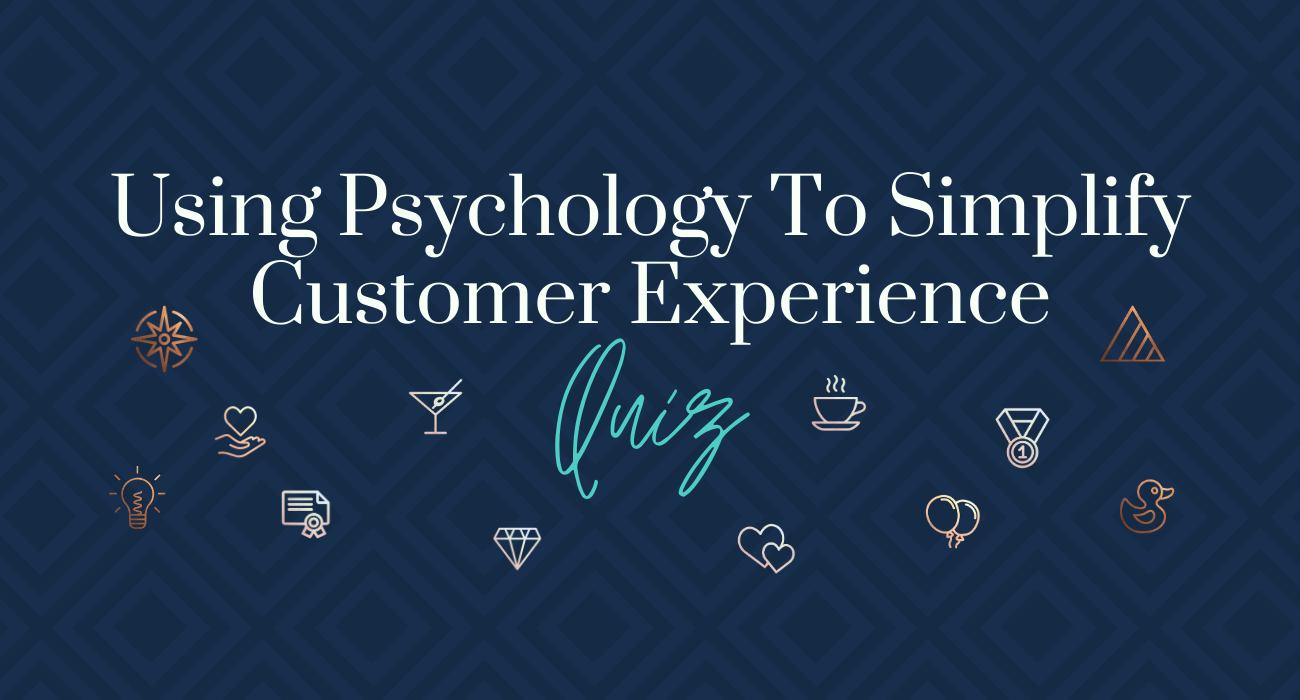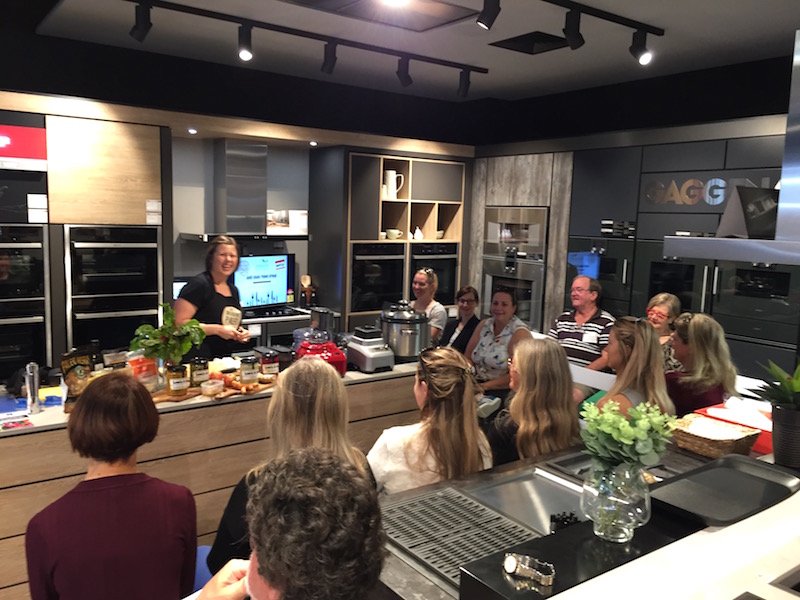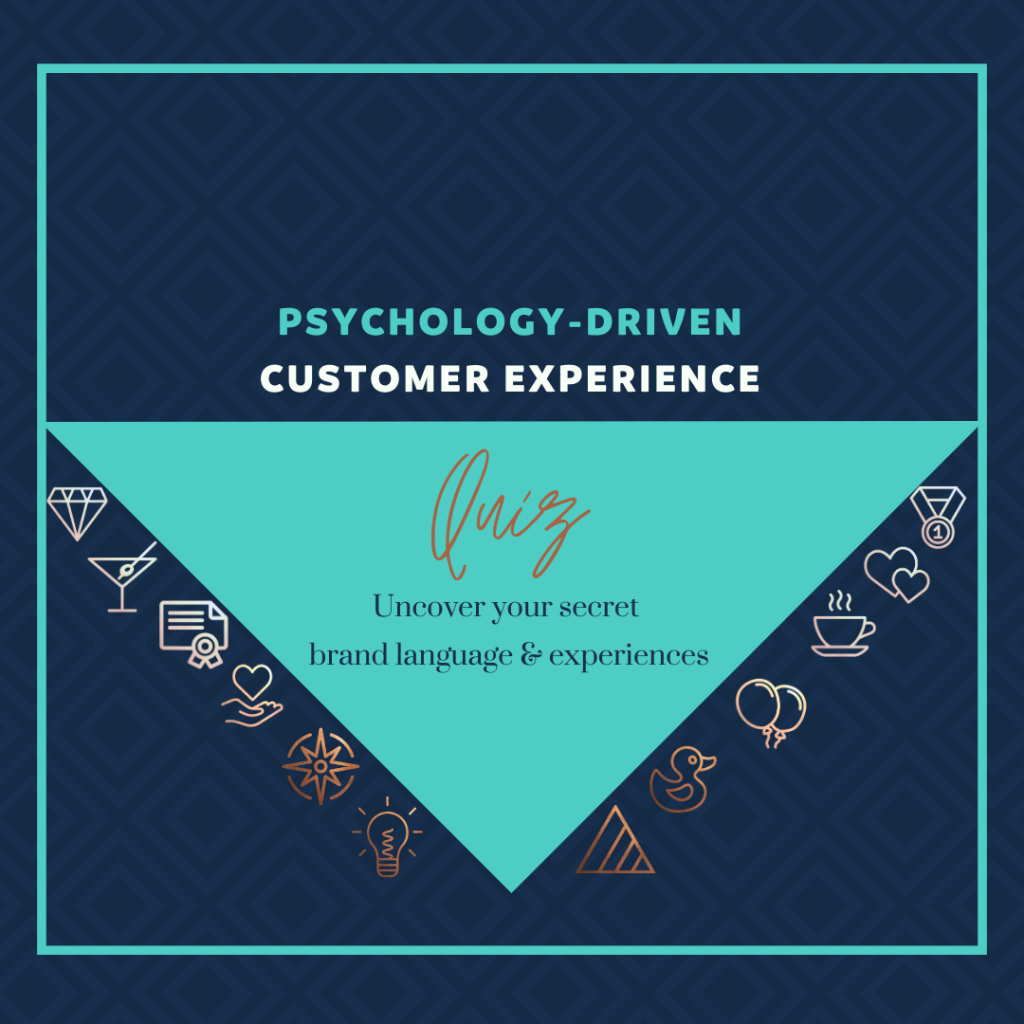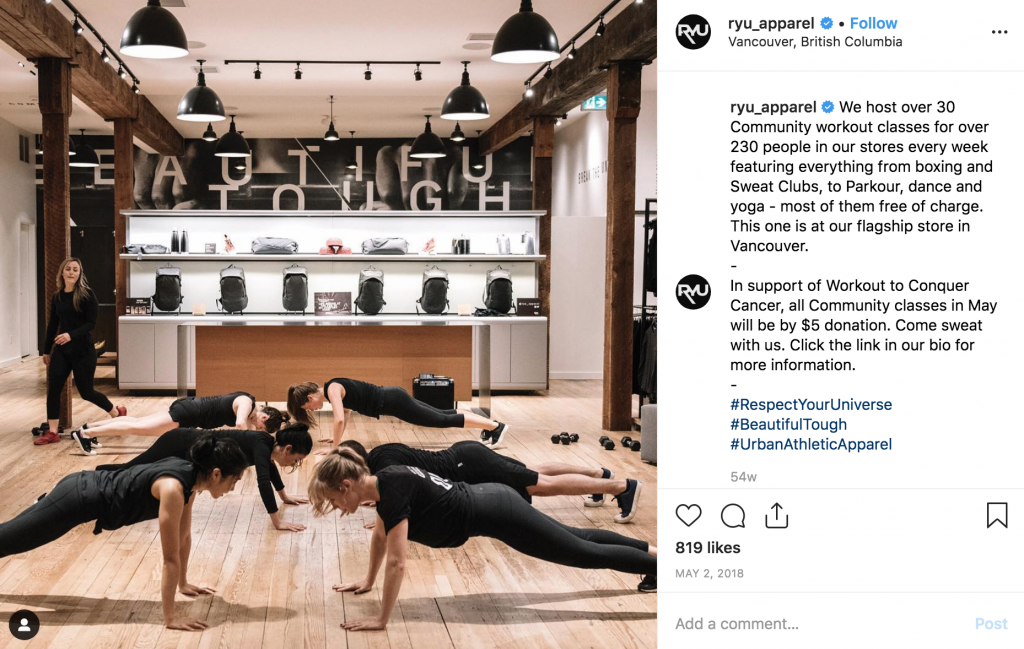
Let’s face it; using the term “customer experience” can be like opening up a can of worms in retail. For some, it’s simple, but it’s incredibly complicated for others. Since psychology is all about understanding how people behave, feel and think, it’s a great place to turn when delivering the best experience for our beloved customers.
Psychology can simplify your customer experience.
1. Follow Your Archetype Compass
Throughout history, the same types of characters have consistently shown up in myths, art, and even blockbuster movies. Like a secret compass, these familiar characters give us a shared meaning and understanding of each other.
So, when it comes to the mystery of customer experience and how we can ‘up our game’, let the secret ‘compass’ of characters or archetypes guide your way.
About Archetypes
According to psychologist Carl Jung, 12 archetypes or characters have served as a compass to understand human behaviour and are imprinted psychologically in each of us.
For instance, when someone presents as “The Hero” (one of the 12-archetypes) in a movie like Wonder Woman, we understand her character and what she represents.
Because of our inbuilt compass, we expect her to behave in a certain way and can typically anticipate her action to overcome evil and prevail.
Each of us craves a connection with people – not products or services – so when your brand adopts a clear and consistent archetype, it becomes familiar, more human-like and trustworthy. In short, we recognise it, and it makes sense to us.
Prevalent in Branding, Less in Customer Experience
While brands like; Nike (Hero), Apple (Creator) and Disney (Innocent), have used archetypes for some time now in branding, translation into customer experience has been slow and lagging.
This lagging has led to customer disappointment in our retail experiences for customers.
Think about a time when you were the customer. I’m sure you’ve struggled through confusing experiences with a beloved brand. We know the experience isn’t quite right, but we’re not sure why it was disappointing? Typically, this is due to incongruence with the brands’ archetype.
Here’s what I mean, let’s say a retail brand is “The Hero” archetype. Our internal compass picks up the visual signs in the store and previous advertising we’ve seen – innately, we realise they are the Hero, even if we are unaware of the exact title.
Exploring Archetypes
As an example, if we walked into their store while they were running an experience or campaign that is more suited to a “Caregiver” (another archetype known for caring, gentle and selfless behaviour) archetype, we might think – “hmmm, that’s lovely. While you may FEEL like it’s a warm and fuzzy campaign, you’re a little confused inside. It doesn’t add to their brand experience and it’s certainly not congruent with their Hero persona.
Next, imagine if that same ‘Hero’ retailer ran an experience or in-store event that brought out the Hero inside their customers. While they may not be aware that this is the very attribute they like, trust and associate with the brand. Now, they’ve experienced the Hero feeling first hand.
This personal transformation and bespoke experience will not only have significance to the customer but also to the retail brand it has brought to life. When the experience matches our inbuild Hero compass, it drives home value, trust and ultimately loyalty and sales.
Having a deep understanding of not only what your archetype is but also how they would act as a person is a great way to simplify the mysteries of customer experience. Take this quiz and uncover your archetype and what experiences are best suited to your unique brand.
2. Value Emotion Over Function in Experience
Since every experience involves your customer to sense, recall and perceive what they’ve just participated in, then understanding why they feel that way through psychology is also critical.
When our clients (multi-store retailers) perform Voice of the Customer research and ask customers to prioritise functional and emotional expectations, the functional expectations always come out on top.
No surprise there really, as we are more aware of functionality with products and technology and expect as a bare minimum for them to work.
However, does this mean that retailers should prioritise functional experiences over emotional ones – my data says no.
In my experience (creating over 300+ psychology-driven experiences), events that produce a more profound emotional response always get more positive feedback.
Emotional Value Often Overlooked
Many firms assume value comes as an additional function in customer journey mapping. While new “functions” along the journey are sometimes necessary, don’t rule out the importance of mood, memory and emotions on the customer journey.
According to Dr McPherson from the University of Otago, we remember emotionally charged events better than functional additions. Also, they form closer bonds with our customers. They can be more cost-effective than developing new functions (apps, microsites, digital displays) and other technologies that can sometimes be forgotten 48hrs after the launch.
Why? One cause is that customers who have a solid emotional connection with a brand have 25% to 100% more value, according to research published in the Harvard Business Review. So, prioritising positive emotional connections delivers financial rewards.
3. Prioritise Community and Human Connection
Well before COVID19 hit, we were already facing an isolation dilemma. In my book The Retail Experiment, I devote a chapter to the trend of isolation in society and how it impacts not only our stores but also our shopping and buying choices.
We’re hard-wired for connection. Our need to belong and connect is rooted in our very survival instincts. However, while we are predisposed to connection, we’re awkwardly surviving alone. 
Balance Easier with Connection
So when delivering experiences to make our customers’ lives easier (think apps for colour matching foundation, augmented reality, etc.) it’s great to leverage technology as a tool for delivery. However, ensure you’re using it as a tool and not expecting it to be a connected or emotional experience. People today, even more so since COVID19 are craving connection with other people and communities.
Giving Customers the Gift of Human Connection
Giving your customers the gift of a face-to-face experience, education or inspiration through experts helps build a prosperous customer community.
In particular, it’s highly beneficial for businesses with a longer sales cycle. If customers only visit you once every year or more, inviting them to a mid-way event can mean the difference in keeping them.
What Innovators are Doing
Innovative retail brands are building healthy customer communities into their customer experience portfolio. These communities facilitate engagement by the brand and between the customers themselves.
Utilising customer communities to grow and deepen relationships can foster belonging, emotions, and inform new and innovative future experiences too.
While humankind loves to specialise and break everything down to its finite niches and details, retail has always been straightforward when it comes to impressing a customer. Connect with them, show them you are listening and give them what they want.
Summary
In summary, utilise your archetype to inform your experiences. Prioritise emotions over new gimmicky functions and listen to your customers’ comments through engaging communities. Simplify and create customer experiences that your customers will love.
Keen to learn more about your experiences? Book a Customer Experience Assessment, a 45-minute Free Zoom call where I’ll personally go over; 7 point assessment of your brand experience across your website, and digital landscape and give you three easy to implement experiences that will drive sales and foot traffic.






Great information – loved this article, such an interesting topic! thanks, Sally
This іs the perfect blog for anyone who
rеally wants to learn about customer experience and archetypes, really enjoyed this article, thanks!
thank you very nice website article
Many thanks Meriem
Thanks for writing such an awesome article. Customer experience is very important so that the customer feels a need to come back and shop again and again. I am always looking for an online store with a good customer experience and a wide fresh variety of products.
Thank you so much for sharing
Thanks for reading Ferahtia, please let me know if there are other things you’d like to read/learn about. Cheers, Amy
Thanks for reading Ferahtia, please let me know if there are other things you’d like to read/learn about. Cheers, Amy
thanks for giving us the great information
My pleasure Soundos, wishing you all the best! Amy
Thank you for sharing information. Wonderful blog & good post. Its really helpful for me, waiting for a more new post. Keep Blogging!!
Thank you, if you have other Marketing, Customer Experience or Branding topics you’d like to read more about let me know, Amy